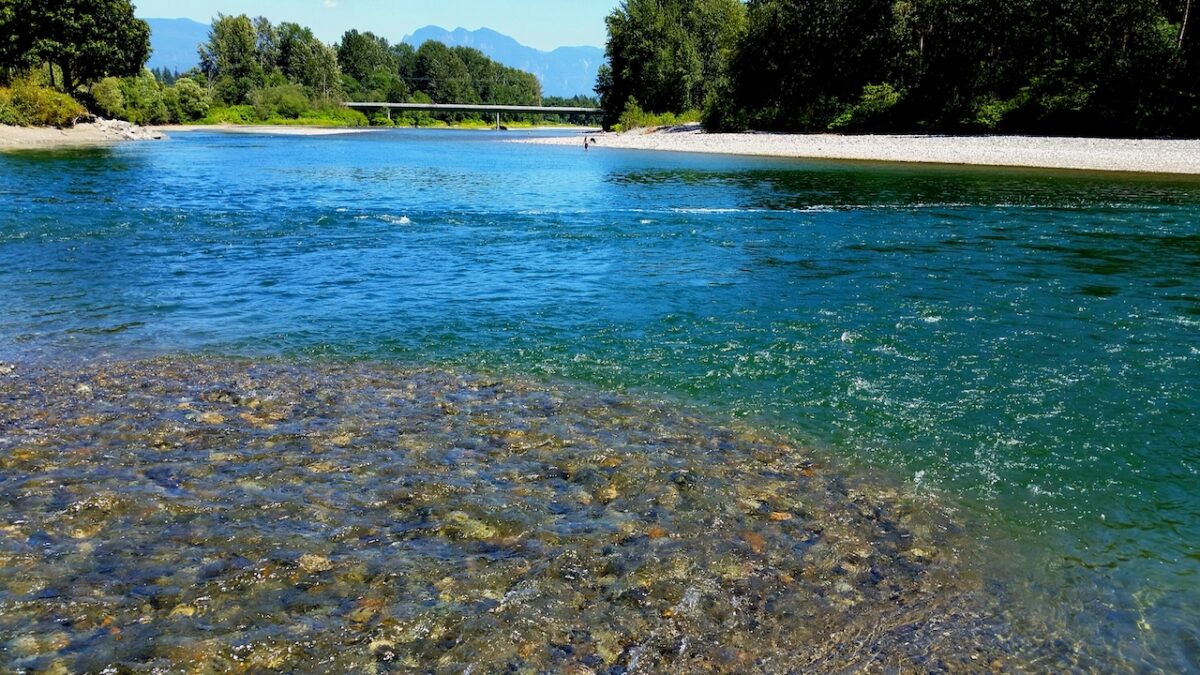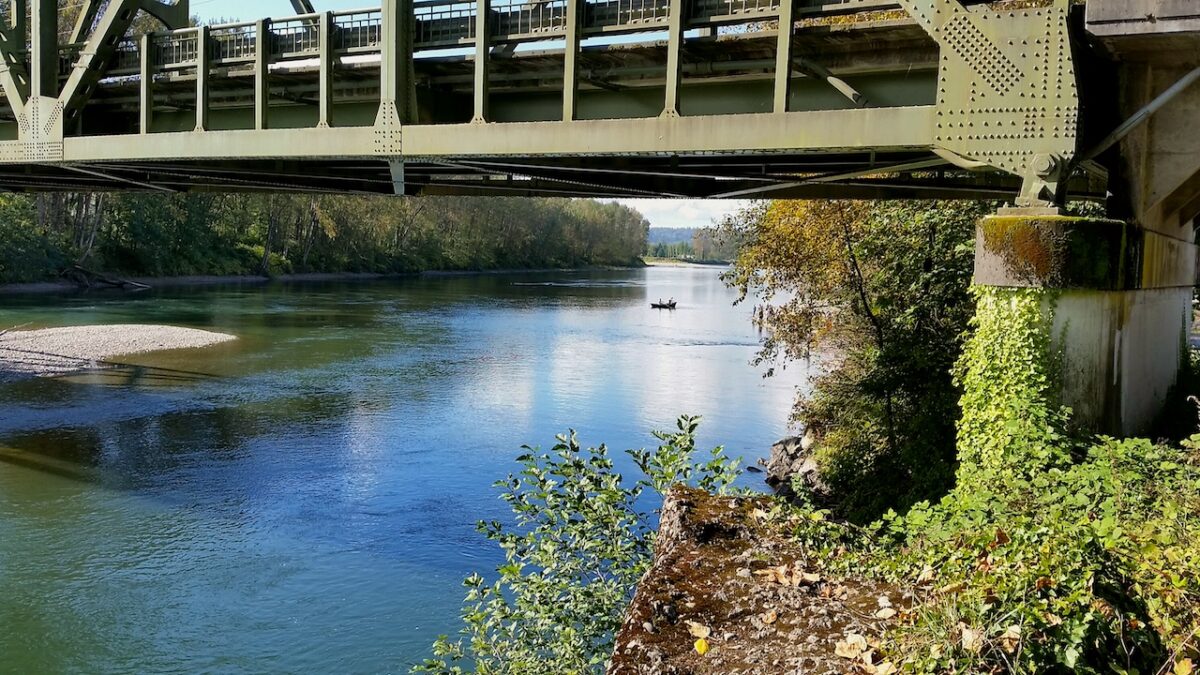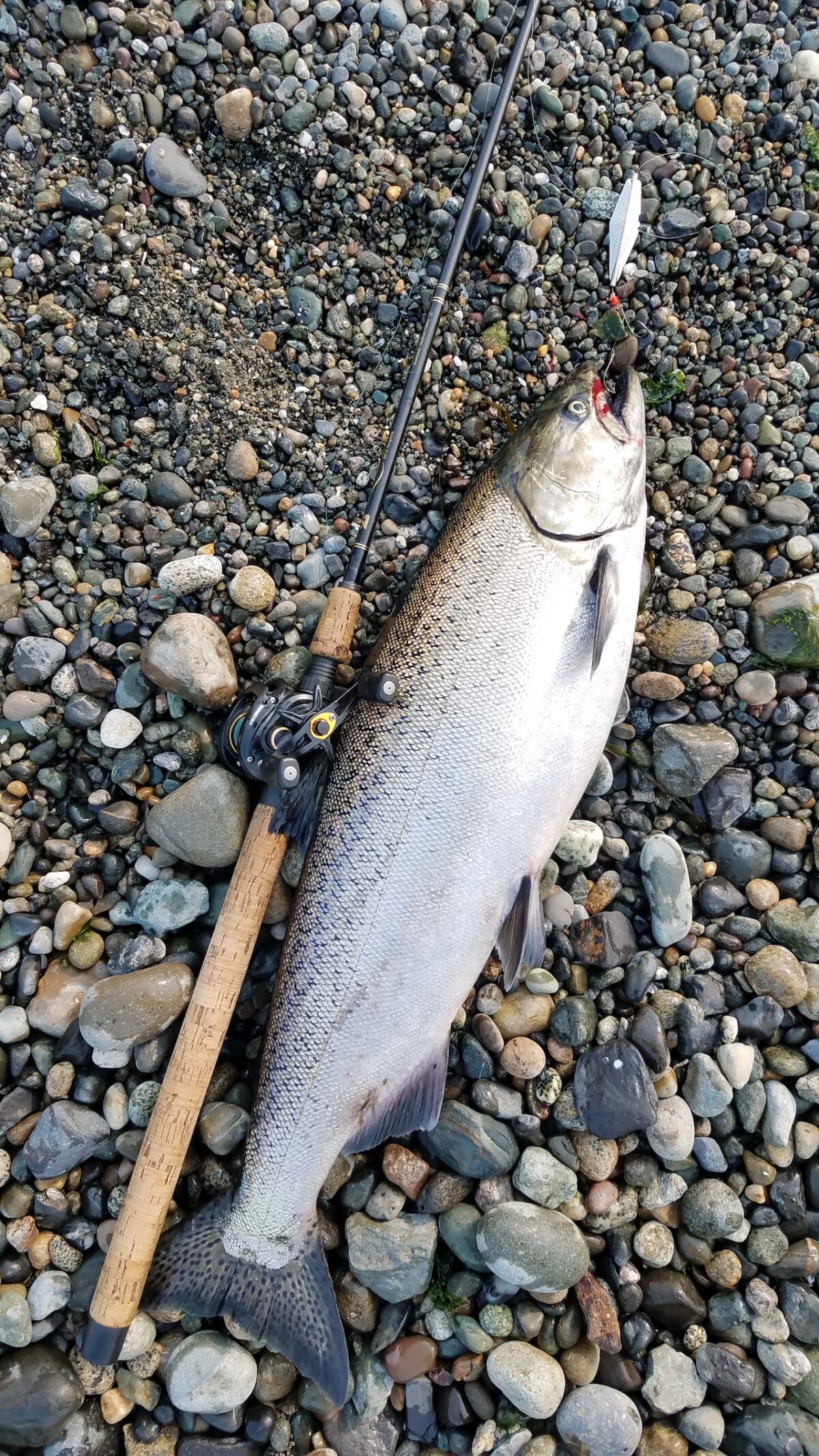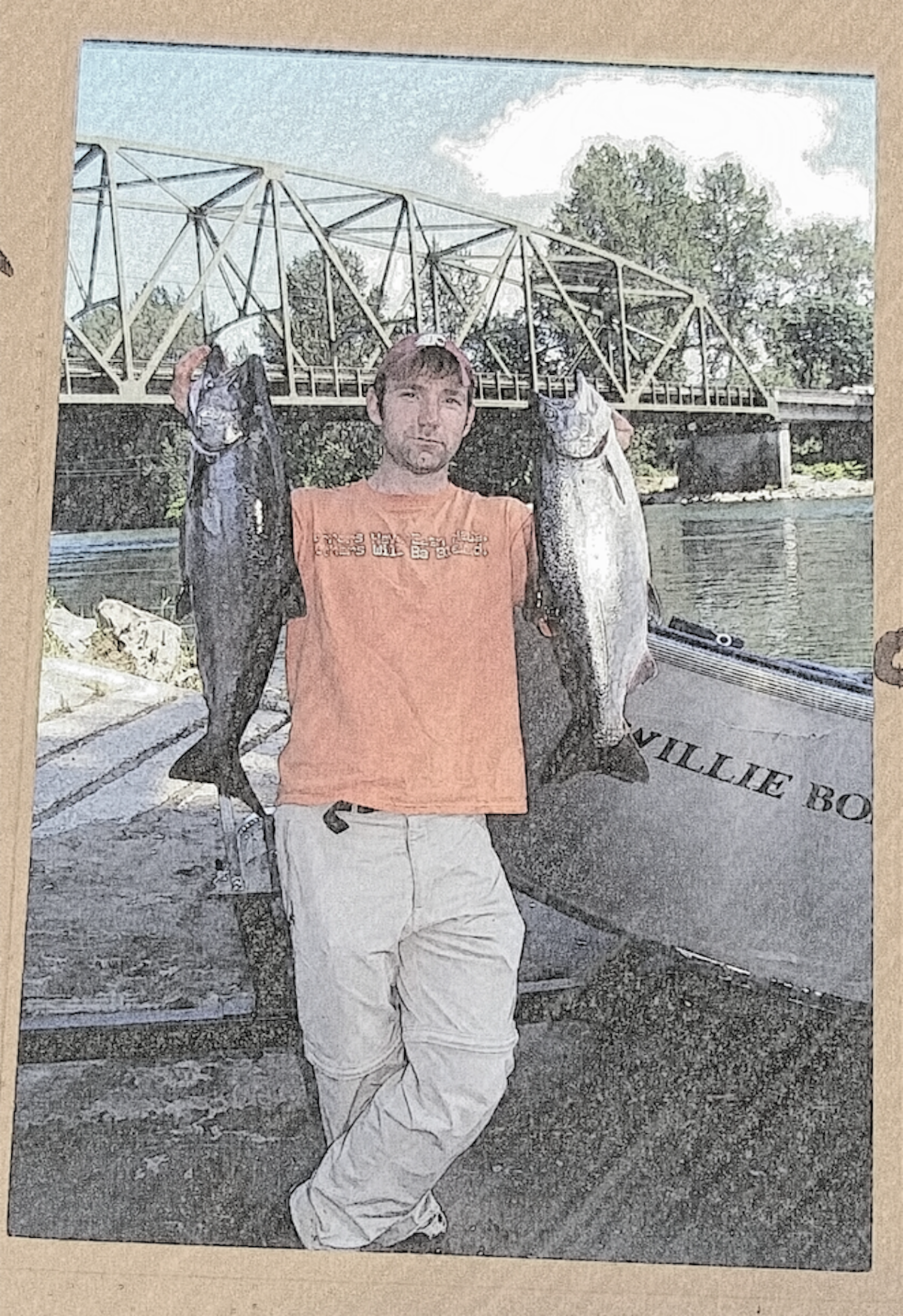
Snohomish Wild Chinook A Stock To Watch At North Of Falcon
Pugetropolis salmon anglers may want to become more familiar with a certain fisheries management term over the coming weeks of North of Falcon: “lower bound threshold.”
You won’t find it in WDFW’s handy-dandy NOF glossary, but it lives in the bowels of the agency and Puget Sound tribes’ 2022 10-year Chinook harvest plan for the Endangered Species Act-listed population.

The lower bound threshold, or LBT, is also identified as the “point of instability” for a stock and is the level beneath what’s known as – stand by for another acronym – the LAT, or low abundance threshold.
The LAT became more widely known during and coming out of 2023’s North of Falcon season-setting discussions and negotiations, where one of the components of the Snohomish River’s wild Chinook run ultimately fell into that category.
That led to all sorts of constraints on last spring’s, summer’s and fall’s fisheries in the Snohomish-King County watershed as state and tribal comanagers also made rebuilding the run a priority following the parent year-class’s worst-ever return in 2019.
For example, you may recall the three-day-ONLY season for abundant hatchery summer Chinook on the lower Skykomish and fishing for hatchery summer steelhead being restricted to the river above the Highway 2 Bridge east of Gold Bar – which then was closed early due to wild kings in the vicinity – as well as the delayed opener and infamous no-eggs rule for coho and pinks on the Snohomish in September, and the Sky not opening for coho till after the second weekend of rifle deer season – and initially only for one week before all the zombie wild kings finally died for good and fishing was opened widely in the basin in November.
The idea behind all that was, given the relatively low impact rate available to WDFW for the stock when all was said and done at North of Falcon, to limit incidental sportfishing encounters with wild Chinook as much as possible. (Turns out, even spawned-out kings are snappy and hooking them still counts against impacts.)

NOW, TO BE CLEAR, IT’S TOO EARLY to say if 2024’s seasons will look just like 2023’s, but as revealed by WDFW last week, this year’s overall forecast for Snohomish wild Chinook is even worse than last year’s, 2,665 fish versus 3,362.
This stock is divided into two components: Skykomish summers and Snoqualmie falls, and it is the latter fish that could fall into that lower bound threshold category.
Last week, WDFW’s first modeling run combining this year’s new abundance forecast with last year’s fisheries from Alaska to Vancouver Island to Possession Point to Monroe and beyond – known as the NALF – spit out escapements of just 1,926 and 687 Sky and Snoqualmie wild kings, respectively.
Under the Puget Sound management plan, the lower bound thresholds for those runs are 1,745 and 700 fish.
“We’ll likely spend a lot of time talking about this over the coming weeks,” Dr. Kirsten Simonsen, WDFW’s Puget Sound recreational salmon manager, told anglers during last Friday’s North of Falcon salmon forecast reveal.
What are the implications of ending up in the LBT?
Page 182 of said Chinook harvest management plan paints a tough picture:
“Should the projected escapement fall below the lower bound of 1745 for the Skykomish or 700 for the Snoqualmie, then additional SUS harvest measures will be taken that season to attempt to prevent further declines in abundance. The comanagers will discuss and implement a contingency set of actions (e.g. closure of in-river mark-selective fisheries, significant reductions or closures to SUS marine fisheries impacting Snohomish chinook), that will contribute to increasing abundance back to levels above the LAT. As potential actions are examined both during pre-season planning as well during as in-season management, the comanagers will consider for factors including environmental factors such as water flow and temperature) (sic), and recent natural origin Chinook escapements (i.e. whether escapement has been below the lower bound in the previous three years).”
–Comprehensive Management Plan for Puget Sound Chinook: Harvest Management Component
Coded wire tag recoveries from hatchery Chinook reared on the Wallace River, a Skykomish tributary, are used as an indicator stock for Snohomish wilds and flesh out where they are hooked.
“… (Fisheries) in British Columbia and (Southern) US sport fisheries comprise the bulk of harvest of this stock, averaging 48.0 percent and 42.8 percent of the total fishing mortality respectively, while Alaska, preterminal SUS troll and net fisheries (mostly in Puget Sound) account for only 2.6 percent, 4.4 percent and 2.2 percent respectively,” the Chinook plan states.
For BC, read the west coast of Vancouver Island, the famous salmon highway and well outside WDFW’s ability to control impacts.
But in Washington waters, tweaking ocean and Marine Areas 5 and 9 summer seasons can produce bigger impact swings, past North of Falcon modeling shows, as can winter-spring blackmouth angling in the Strait of Juan de Fuca and San Juan Islands. The latter no longer has feeder king fisheries, so there’s no potential savings to be had there.
Not to take anything away from the stranglehold that Stillaguamish Chinook have on constraining Puget Sound fisheries, but Dr. Derek Dapp, WFDW’s primary salmon modeler, told NOF attendees last week that Snohomish kings were “a major driver last year and likely will be this year.”
Dapp said that state and tribal comanagers will need to discuss the exploitation rate for the stock. Last year’s exploitation rate, or ER, for SUS fisheries was 8.3 percent, which as Pacific Northwest Best Life blogger Kyle Towle ascertained during Q&A with agency honchos on Friday, included last year’s minimal in-river opportunity.
“So anything [in-river] in 2024 would be above that 8.3% number, which has to come from somewhere and most likely it will need to come from marine areas giving up harvest quota,” Towle surmised.
(Federal requirements are less stringent than the WDFW-tribal management plan.)

W.D.F.W. AT LEAST WON’T HAVE TO factor in impacts from holding odd-year pink salmon fisheries over Snohomish wild Chinook this year, but the coming weeks will determine the extent that Skykomish River anglers will be able to tap into a good forecast of 14,387 clipped kings, about 111 percent of 2023’s prediction of 12,956. Nobody wants to see their seasons shaved down any more than necessary, but surely there must also be some sense in preventing hatchery fish from straying in the system, not to mention recouping the investment in production and expected fisheries, right?
Ahem, so is it time to freak out in the Sky Valley?
“It is too early to say anything about this year’s fisheries yet in the process,” Mark Baltzell, a WDFW salmon manager, assured me on Monday while packing for Pacific Fisheries Management Council meetings this week in Fresno that will in part develop ocean angling alternatives, adding, “although I think your concerns are warranted.”
It’s a dynamic process with chances to change outcomes. Baltzell points out that it was the final agreed-to fisheries plan that came out of NOF 2023 that put Snoqualmie wild Chinook into that LAT category and required managing Snohomish wild Chinook at the 8.3 percent exploitation rate. That led to that Memorial Day Weekend-only fishery for hatchery kings in the Sky and all the other in-river restrictions last season.
“The NALF run that was shared last week indicate that the number of Snoqualmie natural Chinook escapement would be 687 fish. This value is below predicted escapement values from 2023 and in regard to management objectives, is below the 700 natural Chinook lower bound objective described in the Puget Sound Chinook Harvest Management Plan. Given these initial results, expectations for planned freshwater fisheries in the Snohomish watershed should be measured,” Baltzell stated.
Surely, finding 14 fish to stay in the LAT instead of dipping into the LBT is doable?
Leaving harvestable fish on the table has been an issue in Washington in recent years and Baltzell acknowledges the “significant” number of hatchery kings expected back to the Skykomish and Wallace hatchery.
“Going to do our best as always to maximize hatchery harvest and meet our obligations for recovery of natural populations,” he added.
Stay tuned.

SO WHY ARE SNOHOMISH WILD CHINOOK struggling?
That state-tribal management plan talks about scouring floods suffocating the redds, low summer flows, habitat alterations and less shading that reduce refugia for baby fish, bank armoring that warms water temperatures – factors that are particularly troublesome on the slower Snoqualmie.
Then there are the challenges smolts and adults face in the estuary, Puget Sound and the North Pacific – ocean conditions, marine mammal predation, fisheries interception.
They appear to be binding these salmon to lower returns, and this year they might fall into the LBT.
